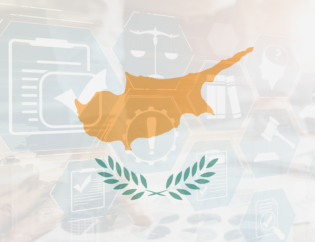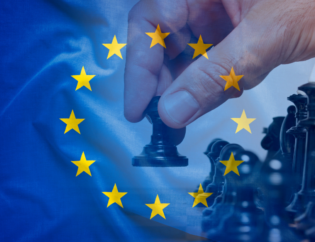
As the digital economy continues to expand, cryptocurrency and its associated technology have emerged as significant constituents of global financial systems.
This rapidly evolving landscape has highlighted the necessity for regulation in order to ensure stability, security, and consumer protection within the blockchain ecosystem. The nature and extent of these regulations, however, can vary significantly across different jurisdictions, reflecting the complexity of the cryptocurrency domain and the diverse perspectives of policymakers worldwide.
This short research note aims to conduct a comparative study of regulatory approaches adopted by Brazil and the European Union (EU) towards cryptocurrencies. Both these regions hold a prominent position in the global financial landscape and their regulatory stance on crypto assets significantly influences the broader global discourse on cryptocurrency regulation.
Brazil, one of the largest economies in Latin America, has been notable for its proactive engagement with cryptocurrency. Brazilian regulators have adopted a relatively accommodating stance, aiming to harness the potential of blockchain technology and digital currencies for economic growth, while also striving to mitigate potential risks.
On the other hand, the European Union, a major global economic powerhouse, has adopted a more structured and comprehensive approach towards cryptocurrency regulation, emphasising consumer protection, financial stability, and mitigation of illicit activities.
Comparing and contrasting these regulatory approaches can shed light on the key drivers shaping global cryptocurrency regulation, identify best practices, and contribute towards the ongoing global dialogue on establishing standardised regulatory frameworks for digital currencies. Considering the vast differences in the scope of regulations between these two economic blocs, this note will primarily focus on the rules defining crypto assets, as well as the general principles guiding the licensing of crypto businesses
A. Brazilian requirements for providing crypto services
Brazil has recognized the global impact and importance of crypto assets in the economy and financial markets. In response, the country approved a regulatory framework for crypto businesses through the enactment of the "Virtual Assets Law" (VAL) in 2022. This law provides guidelines for the provision of virtual asset services and the regulation of virtual asset service providers (VASPs).
On June 14, 2023, the highly anticipated regulatory pronouncement was released by the Brazilian government, officially appointing the Central Bank as the designated regulatory authority responsible for overseeing the crypto asset market.
The Central Bank is expected to issue specific regulatory instructions in the near future, granting existing VASPs a grace period to align their operations with the new regulations. However, there are still uncertainties surrounding the regulatory framework for entities that do not currently operate within Brazil. It's important to note that the Securities and Exchange Commission (CVM) retains the authority to regulate crypto assets that exhibit characteristics of securities, including fixed income tokens. Assets representing securities are subject to law which governs the securities market in Brazil such as stocks, bonds, debentures, investment funds, and other financial instruments. The CVM, as the regulatory body, oversees the issuance, trading, and disclosure of securities, as well as the behaviour of market participants.
The Essence of Virtual Asset Law
The aim of the VAL is to establish a regulated framework for virtual assets, rooted in principles such as free enterprise and competition; good governance practices, transparency, and a risk-based approach; information security and personal data protection; consumer and user protection and defense; protection of deposits and savings; operational soundness and efficiency; and the prevention of money laundering and terrorism financing.
The VAL’s guidelines require regulatory implementation by the Federal government, that has yet to define who the competent Federal authority for handling licensing and supervisory duties regarding the business of crypto assets will be. It shall be up to the competent Federal authority, once chosen by the Brazilian Federal Government, to regulate the procedures for granting licences to crypto businesses.
Nevertheless, VAL already lays down important normative features that should be taken into account by current and prospective market actors.
1. Definition of virtual asset
Under VAL, a virtual asset is considered “a digital representation of value that can be traded or transferred by electronic means and used to make payments or for the purpose of investment”. This definition excludes from the concept of virtual assets:
- national currency and foreign currencies (including Central Bank Digital Currencies);
- electronic money;
- instruments that provide their holders with access to specified products or services or to benefit from these products or services, such as points and loyalty program rewards; and
- representations of assets whose issuance, bookkeeping, negotiation or settlement is provided for by law or regulation, such as securities and financial assets.
2. Licensed activities
According to VAL, the following services provided to third parties are considered businesses in virtual assets, and must therefore only be offered after a regulatory licence is secured:
- Conversion of virtual assets to fiat and fiat to virtual assets;
- Exchange of virtual assets for other virtual assets;
- Transfer of virtual assets;
- Custody or management of virtual assets or instruments that control virtual assets; and
- Participation in financial services and the provision of services connected with an offer or sale of virtual assets.
B. The EU’s regulatory framework
The final version of the Regulation of the European Parliament and of the Council on markets in crypto-assets (“MiCA”) was approved on 2 May 2023. MiCA seeks to establish uniform rules for virtual assets service providers and issuers at EU level.
The objectives of MiCA are to guarantee legal certainty for both consumers and investors; promote innovation; ensure fair competition on the market; and protect customers and investors from money laundering.
Contrasting with the VAL, which primarily regulates fundamental principles while more detailed regulation awaits enactment, MiCA is regarded as the world's most comprehensive regulatory framework for crypto assets – the final approved document spans 525 pages. From its anticipated enforcement date, between mid-2024 and early 2025, MiCA will be directly applicable in its entirety within the legal jurisdictions of all EU Member States, dispensing further legislation enactment.
1. Definition of crypto asset
According to MiCA, a crypto asset is “a digital representation of a value or of a right that is able to be transferred and stored electronically using distributed ledger technology or similar technology”. MiCA applies to all crypto assets, with the exclusion of those that qualify as other realities under EU law, such as:
- financial instruments;
- deposits; funds (except if they qualify as e-money tokens);
- securitisation positions;
- certain non-life or life insurance products; and
- certain forms of pension products.
MiCA also does not apply to unique and non-fungible crypto assets.
MiCA then makes a distinction between three types of crypto assets or “tokens”:
- Asset reference tokens (crypto asset whose - stable - value is backed by a basket of other values, that can include fiat currencies)
- E-money tokens (crypto asset whose - stable - value is backed by one fiat currency)
- Utility tokens: (a crypto asset that provides access to goods or services).
2. Licensed activities
According to its first article, MiCAR “lays down uniform requirements for the offer to the public and admission to trading on a trading platform of crypto-assets other than asset-referenced tokens and e-money tokens, of asset-referenced tokens and of e-money tokens, as well as requirements for crypto-asset service providers.” In other words, it establishes the requirements for:
- Issuing crypto assets;
- Admission to trading of crypto assets; and
- Criteria that crypto asset service providers must meet to exercise their business.
Crypto asset service providers are under MiCA all businesses that exercise one or more of the following activities:
- providing custody and administration of crypto-assets on behalf of clients;
- operation of a trading platform for crypto-assets;
- exchange of crypto-assets for funds;
- exchange of crypto-assets for other crypto-assets;
- execution of orders for crypto-assets on behalf of clients;
- placing of crypto-assets;
- reception and transmission of orders for crypto-assets on behalf of clients;
- providing advice on crypto-assets;
- providing portfolio management on crypto-assets;
- providing transfer services for crypto-assets on behalf of clients;
According to MiCA, all crypto service providers must be licensed with a national competent authority to exercise their activity. Once registered, these businesses shall be able to provide services in other EU Member States through passporting rules.
C. Comparative elements
Comparing VAL’s and MiCA’s requirements for crypto assets and licensing businesses, there are three interesting takes to point out:
1. The definition of virtual assets in VAL is broad; however, the existence of exclusions provides a bit of clarity, by establishing that security tokens, some forms of utility tokens, and CBDCs are not covered by the law. Other virtual assets, such as Bitcoin and stablecoins that are not electronic money shall be, in principle, covered by this legislation. However, NFTs seem to be included, and it is unclear what can be considered as a digital representation of value used for investment purposes that is not regulated by securities’ law.
On the other hand, MiCA does not establish a payment or investment purpose as a condition to classify a digital representation of value as a crypto asset. Also, the digital representation of value in MiCA must be registered in a DLT or equivalent technology to be considered a crypto asset; in VAL this is not necessary, which means that virtual assets not cryptographically registered are also covered by this law. Also, there are several insurance and financial products that, even if issued in the form of crypto assets, fall outside of MiCA regulation and into the scope of sectoral legislation.
2. VAL excludes from its scope virtual assets that can be used to provide goods or services, while MiCA regulates them as utility tokens. Therefore, a utility token provider shall be exempt from virtual asset regulation in Brazil, while a utility token provider in the EU must register under MiCA.
3. MiCA seems to present a more extensive list of regulated services than VAL. However, most services regulated by MiCA are also regulated by VAL under the more general clause of “participation in financial services and the provision of services connected with an offer or sale of virtual assets. However, neither MiCA nor VAL explicitly regulate the provision of services in crypto by computer protocols, and therefore seem to leave DeFi out of their scope.
Conclusion
In conclusion, the comparison between Brazil's Virtual Assets Law and the European Union's Markets in Crypto Assets Regulation presents two distinct, yet similarly intent-driven, approaches to cryptocurrency regulation. These regulatory frameworks are reflective of the jurisdictions' unique economic, political, and social contexts, as well as their strategic intentions within the growing global digital economy.
Brazil's regulatory approach, which revolves around broader principles and a more flexible framework, is illustrative of its desire to nurture innovation and capitalize on the potential economic benefits of digital assets. However, the lack of comprehensive regulation also poses challenges, particularly in terms of consumer protection and preventing illicit activities.
Conversely, the EU’s MiCA represents a more structured and comprehensive approach, providing a detailed regulatory framework that is designed to promote stability, protect consumers and prevent illegal activities associated with crypto assets. While this approach may offer a more secure environment for both consumers and businesses, its complexity might pose implementation challenges and potentially stifle innovation.
To know more about MiCA or VAL and its challenges please contact us:








